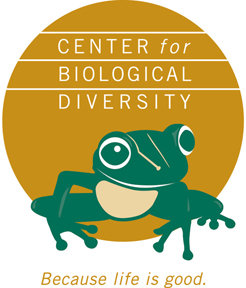October 29, 2020 - LOS ANGELES - The Center for Biological Diversity filed a notice on Wednesday of its intent to sue the U.S. Fish and Wildlife Service to force it to update  an inadequate, 35-year-old recovery plan for a tiny, scaleless fish called the unarmored threespine stickleback. These critically endangered fish are only found in a few Southern California streams in Los Angeles and Santa Barbara counties.
an inadequate, 35-year-old recovery plan for a tiny, scaleless fish called the unarmored threespine stickleback. These critically endangered fish are only found in a few Southern California streams in Los Angeles and Santa Barbara counties.
Even though the species was protected under the Endangered Species Act more than 50 years ago, stickleback populations are increasingly threatened by habitat destruction, water pollution, groundwater withdrawals, wildfire and non-native predators. Among these sticklebacks, males are the nest-builders and egg guardians, ejecting females from their nests after they’ve laid the eggs and fiercely defending their young (see below).
“Sticklebacks are one of California’s most endangered fish, and they desperately need federal help to avoid extinction,” said Ileene Anderson, a senior scientist at the Center. “These little fish are found no place else on Earth, and they deserve an updated plan to guide their recovery and prevent them from vanishing forever.”
A recovery plan was created in 1985 for the stickleback, but it did not satisfy the requirements of the Endangered Species Act. Although the Fish and Wildlife Service acknowledged in 2009 that the 1985 plan does not reflect the best available science, it has not prepared an updated recovery plan. The recovery plan also does not address how climate change may impact the stickleback. The Service has also conceded in 2009 that none of the recovery criteria in the 1985 plan have been met.
Since 1985, a single new population of stickleback has been discovered in Bouquet Creek, but two known populations have been wiped out. The fish once ranged throughout the Los Angeles basin, but there are now only five known remaining populations.
A 2015 study found the fish at “high risk of extinction,” and surveys did not identify stickleback in areas where they were abundant in previous years.
Background
The male threespine stickleback establishes a territory that he vigorously protects, builds a nest in the sand, and, after cementing the nest materials together with mucus threads spun from his kidneys, burrows through the nest to make an exit and entrance.
When the nest is ready, he searches for a female carrying eggs and swims near her in a zigzag, dancing motion. If the female is attracted, she follows him to his nest, where she deposits her eggs. The male immediately fertilizes the eggs and drives the female away. Over the course of the breeding season, he may entice other females into his nest as well. Males protect both eggs and fry from predators. Incubation time averages six to eight days.
The two-inch fish was protected as endangered under the Endangered Species Conservation Act of 1969, the precursor to the current Endangered Species Act.
The species was historically present in the Los Angeles, Santa Ana, and San Gabriel Rivers, but by 1985 was limited mostly to a small portion of the upper Santa Clara River drainage in northwestern Los Angeles County and a small area in the San Antonio Creek drainage in Santa Barbara County.
The Center for Biological Diversity is a national, nonprofit conservation organization with more than 1.7 million members and online activists dedicated to the protection of endangered species and wild places.
Source: Center for Biological Diversity








